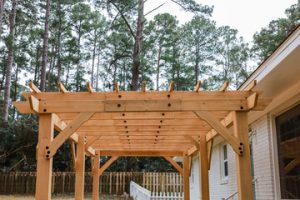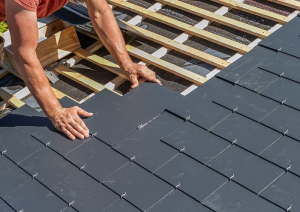Fiberglass is a durable and affordable material for auto body repair. Unlike steel, fiberglass resists rust and can be molded to fit various areas of the vehicle.

However, it’s important to ensure the quality of the repairs. Using the wrong materials or improper bonding can lead to cracks and delamination. Keep reading the article below to learn more about Fiberglass Auto Body Repair.
Fiberglass is one of the strongest materials used to make auto body components, but it is not indestructible. Like any material, fiberglass can be damaged by impact or environmental exposure. When this occurs, it is important to seek timely and professional repair services to restore the structural integrity of the component.
Professional fiberglass repair begins with an assessment of the damage extent. Technicians must determine whether the damage is cosmetic or if it compromises the integrity of the fiberglass structure. Once this is completed, the damaged area is cleaned and sanded to allow for proper adhesion of the repair material.
Next, the fiberglass is repaired using a product called fiberglass bondo. This product is infused with fiberglass strands that provide greater strength and durability than traditional fillers. Fiberglass bondo is ideal for repairing large dents, holes, and cracks. It also offers resistance to abrasion and extreme weather conditions.
Once the repair is complete, the fiberglass is sanded and molded to match the original contour of the damaged part. This ensures that the final repair is as strong as, if not stronger than, the original component.
Another key benefit of fiberglass is its resistance to corrosion. This makes it a great choice for repairs that are exposed to salt air and other harsh weather conditions. It is also a good choice for parts that are susceptible to rust due to repeated contact with moisture.
Fiberglass is a relatively inexpensive option for repairing automotive components. It is much cheaper than metal, and it requires less labor to work with. This combination of cost and strength makes it an appealing option for vehicle owners who are looking for budget-friendly repair options. Additionally, fiberglass is durable, so it can last longer than other materials. This is an excellent choice for those who want to keep their vehicles running long after the warranty expires.
Durability
Fiberglass used to be the secret weapon of racing cars and hobbyists, but it’s now a smart, practical option for everyday drivers seeking long-lasting, cost-effective, and eco-friendly repairs. Whether it’s smoothing out a ding, reinforcing a structural area, or customizing a look, fiberglass gives you more control and adds value to your vehicle.
The key to quality fiberglass auto body repair is precision. Skilled technicians can mold, patch, and sculpt damaged areas without requiring full panel replacements. This saves labor time and materials costs. It also helps ensure that the resulting finish is seamless and looks factory-quality. Fiberglass is also lighter than metal, so it reduces overall vehicle weight. This lowers the pressure on your engine and improves fuel efficiency.
Poorly executed fiberglass repairs can crack or delaminate over time, compromising the strength of the component. This can lead to other problems, such as brittle metal or improper airbag deployment. In addition, a substandard repair may affect the appearance of the rest of the vehicle and detract from its value.
Choosing a Shop for Fiberglass Auto Body Repair
It’s important to choose a reliable shop for your fiberglass repair because not all shops are created equal. A good fiberglass repair shop will offer warranties, have customer reviews, and a commitment to delivering high-quality work. If you have any questions, ask to see photos of previous work and talk to the technician about their experience with fiberglass repairs.
Proper maintenance is the best way to keep your fiberglass body looking its best and lasting longer. Start by doing regular visual inspections of your vehicle’s exterior, especially in places that receive a lot of stress. Check for signs of damage, including dings, dents, and scratches. If you do find a problem, get it repaired right away to avoid further damage and costly repairs. It’s also a good idea to stay up-to-date on your vehicle’s scheduled maintenance to keep it running in top shape. This includes routine oil changes, tire rotations, and windshield wiper replacement. Keeping up with these maintenance tasks will help you avoid expensive repairs and improve your car’s performance.
Aesthetics
Fiberglass is an excellent option for auto body repair because it looks great and is easy to work with. It is lightweight, which helps improve fuel efficiency and handling, and it is corrosion-resistant. It can also be easily molded and shaped, which is useful for customization and vehicle aerodynamics. Fiberglass is also a more affordable option than other materials, such as carbon fiber, which makes it ideal for enthusiasts who want to add custom touches to their vehicles.
When properly repaired, fiberglass can last a long time. It is easy to keep clean and looking good with regular washes and waxing. It is also possible to use protective coatings that can help prevent corrosion, especially if the fiberglass is exposed to moisture or harsh chemicals. When repairing fiberglass, it is important to use high-quality products and follow the proper steps to ensure that the repairs are durable and long-lasting.
The Best Ways To Protect Fiberglass
While fiberglass is an excellent material for the bodies of cars, it is not impervious to damage and corrosion. Exposure to moisture, UV radiation, and other environmental factors can cause the fiberglass to degrade, which may lead to cracks, fading, or even complete delamination. The good news is that if these problems are addressed quickly, they can be reversed.
If you have a fiberglass car, it is important to have the best repair shop for the job. A reputable shop should offer warranties on their work, have a positive customer rating, and use high-quality products. It is also essential to use a well-ventilated workspace when working with fiberglass and to wear appropriate safety gear to protect yourself from harmful fumes.
A superior auto body filler is one of the most effective ways to prevent fiberglass corrosion. A quality filler will dry quickly, allowing you to move on to the painting stage sooner. It will also be easier to sand, ensuring smooth and consistent results. It is also a good idea to store your vehicle in a garage or covered area, and to avoid using harsh chemicals when cleaning.
Cost
Fiberglass is a cost-efficient alternative to metal, saving weight and money without sacrificing strength. But what really sets fiberglass apart is its durability. In addition to resisting high impact collisions, it holds up to minor damage, road wear and weather exposure. And unlike metal, it doesn’t rust or corrode, resulting in a longer-lasting finish and fewer costly repair bills.
Because fiberglass is so durable, it requires less frequent repairs than traditional auto body work. This saves you time, money and stress. Whether it’s to smooth out a dented area or customize your ride with a spoiler, fiberglass is a smart option for anyone looking to add functionality and value to their vehicle.
Unlike metal, fiberglass doesn’t rust or warp with temperature changes. This makes fiberglass an ideal choice for those seeking a more environmentally-friendly and efficient repair option.
Like any material, however, fiberglass is not indestructible. If improperly bonded, it may develop cracks or delamination, leaving the area susceptible to further damage. To avoid this, always use a professional shop with specialized equipment and high-quality fiberglass resins and coatings.
The experts at Juanito’s Auto Body are committed to quality fiberglass repair that lasts. That’s why we utilize advanced methods to create a repaired surface as strong or stronger than the original. We start by assessing the extent of the damage. Surface cracks and chips can be quickly repaired using gel coat, while more substantial structural damage may require more extensive repair techniques.
Next, we carefully apply layers of fiberglass mat and resin to the damaged area. As we apply each layer, we ensure that it’s fully saturated and bonded to the previous one, creating a reinforced structure that’s stronger than the original.
This is what makes fiberglass so effective in a wide range of repair applications. It’s the key to reducing maintenance costs and increasing the overall longevity of your vehicle.
While it’s easy to do DIY fiberglass repair, it’s critical to visit a certified technician when your car needs repairs. A substandard repair can compromise the integrity of your vehicle’s structure, posing serious safety risks for you and your passengers.





